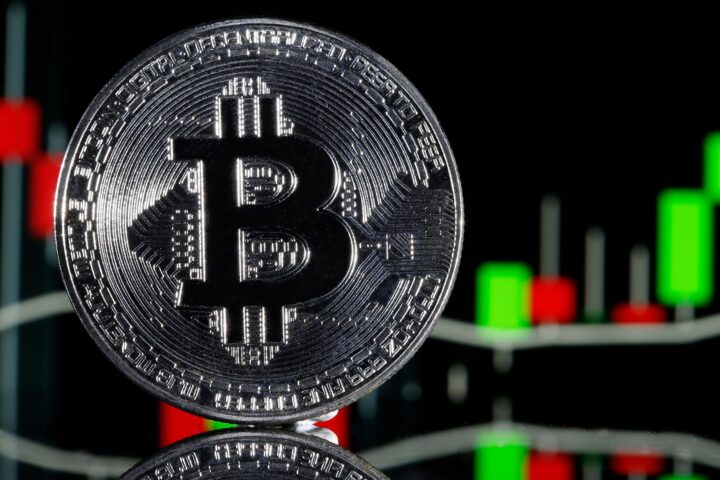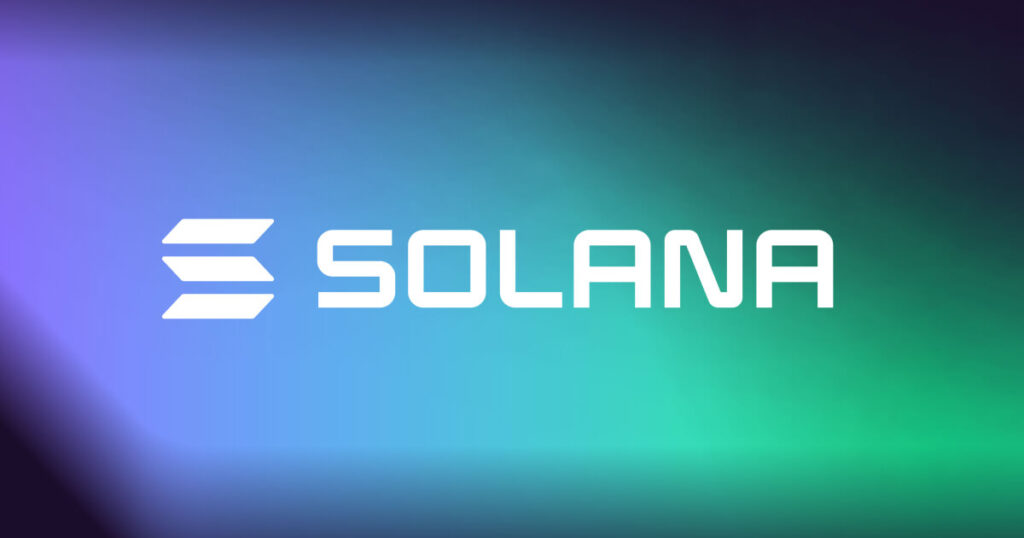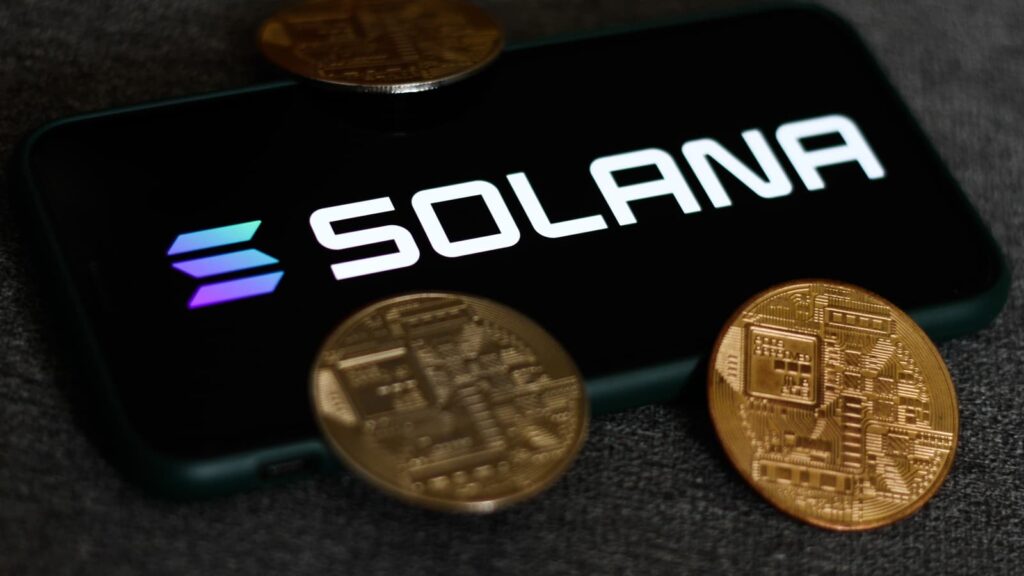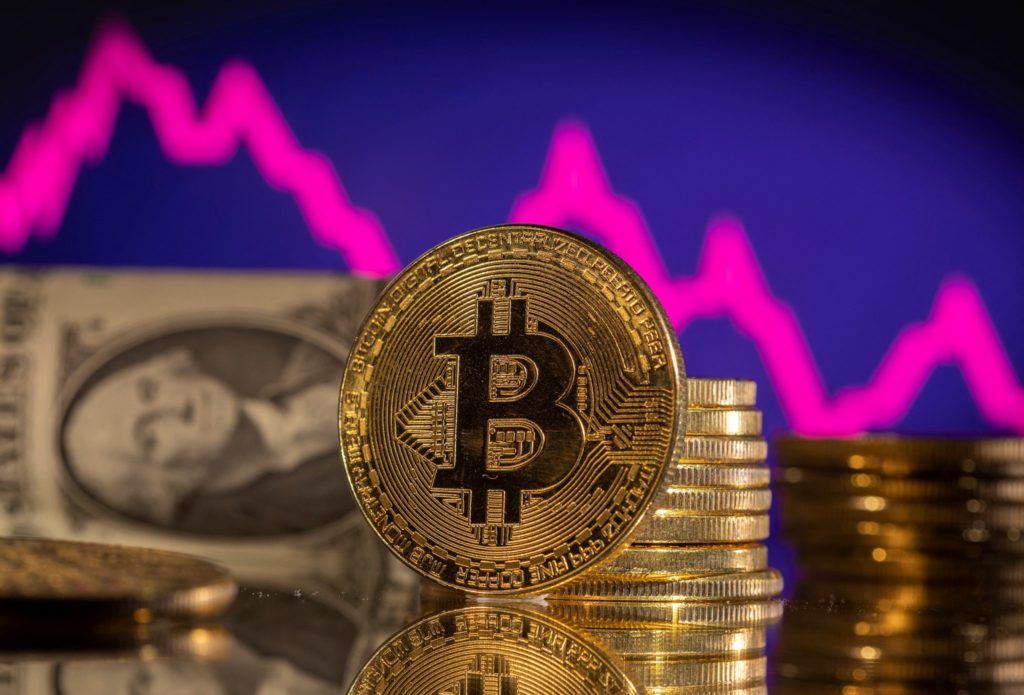Terraform Labs, the entity responsible for the now-defunct TerraUSD (UST) stablecoin, has initiated bankruptcy proceedings in the United States.
The company filed for Chapter 11 bankruptcy protection at the United States Bankruptcy Court for the District of Delaware, indicating estimated liabilities and assets ranging from $100 million to $500 million, as per a January 21 filing.
In a separate statement, Chris Amani, the CEO of Terraform Labs, stated, “The Terra community and ecosystem have shown unprecedented resilience in the face of adversity, and this action is necessary to allow us to continue working toward our collective goals while resolving the legal challenges that remain outstanding.
We have overcome significant challenges before and, against long odds, the ecosystem survived and even grew in new ways post-depeg; we look forward to the successful resolution of the outstanding legal proceedings.”
According to the bankruptcy filing, the defunct company’s liabilities and assets both fall within the range of $100 million to $500 million.
READ MORE: Bitcoin ETFs: Game Changer or Threat to Crypto’s Core Principles?
This development comes just four days after the U.S. Securities and Exchange Commission (SEC) granted a postponement of Kwon’s upcoming fraud trial until March 25 in response to a request from his legal team.
The Terra ecosystem, overseen by Kwon, experienced a collapse in May 2022.
Following the firm’s implosion, the whereabouts of its co-founder remained unknown until he was apprehended in Montenegro in March 2023 for attempting to use forged travel documents to leave the country.
The SEC initially filed civil charges against Terraform Labs and Kwon in February 2023, accusing both parties of orchestrating a “multi-billion dollar crypto asset securities fraud” linked to the tokens previously known as UST and Terra (LUNA).
The United States and South Korea are both seeking Kwon’s extradition, sparking speculation that he could face multiple sentences in both nations.
Should Kwon be extradited to South Korea, he might potentially confront a 40-year imprisonment sentence in the country where the majority of his alleged crimes were committed.
Solana’s native token, SOL, faced a 9% decline on January 18, dropping to a low of $91.40.
This marked the continuation of a trend where SOL struggled to breach the $100 level for the past 15 days.
However, this setback shouldn’t cause excessive concern, given the overall cryptocurrency market’s inability to maintain levels above $1.6 trillion throughout 2024.
Despite this recent dip, SOL boasted an impressive 84% gain in December, although investors are beginning to express concerns about the lack of sustained positive price momentum.
The December 2023 rally of SOL was driven by FOMO (fear of missing out), triggered by the surge in Solana SPL token airdrops, including Jito (JTO), BONK, and Dogwifhat (WIF).
This phenomenon led to increased demand for the Solana Saga Phone as some projects offered exclusive benefits to these users.
However, the tide has turned recently, with BONK experiencing a 15% correction between January 17 and 18, and JTO declining by 19% during the same period.
Another contributing factor to SOL’s correction was the excessive optimism surrounding airdrop expectations.
Some launches were delayed, and others provided only temporary boosts to its decentralized applications (DApps), fizzling out after the airdrop snapshots.
Analysts and influencers created lists of promising opportunities, but few tokens reached substantial valuations and trading volumes.
Optimism regarding SOL’s token performance is partly fueled by the growth of deposits within the Solana Network’s decentralized finance (DeFi) sector.
The Total Value Locked (TVL) in SOL tokens peaked at 15.4 million on December 19, 2023, marking a 60% increase compared to the previous month.
Although it has stabilized around 14 million, growth has been notable in Jito and Marinade Finance liquid staking solutions, as well as Kamino, Orca, and Solend DeFi applications, which have all surpassed $150 million in deposits.
Despite its recent decline in transactions and active DApps users, Solana’s network activity has been on the rise in terms of overall transactions and volumes, albeit still trailing competitors like BNB Smart Chain and Polygon.
READ MORE: Spot Bitcoin ETFs See Robust Growth with 10,667 BTC Accumulated in 5 Days
Solana did witness an 8.5% decline in transactions over the last seven days. However, it leads in the absolute number of transactions at 72.3 million, partially due to its lower costs.
Solana’s unique architecture, which relies on heavy-processing validation, has attracted criticism but also provided opportunities for DApps requiring extensive bandwidth, including token launches, NFT collections, games, and social networks.
Notably, Solana became the third-largest network in NFT marketplace volumes, with NFT transactions reaching $270.5 million, trailing Ethereum by just 20%.
The current state of Solana’s network activity doesn’t indicate an imminent sharp price correction for SOL, thanks to its resilience in terms of DApps volumes and TVL.
However, there is downward pressure on SOL’s demand due to excessive expectations related to airdrops and SPL token performance.
SOL’s market capitalization currently stands at $40.6 billion, with a price of $94, still 50% lower than its peak in November 2021.
There is potential for an upside if the network continues to attract interest from projects that value its stability amid high network processing demand, especially as many competitors grapple with surging transaction fees or prolonged instability.
Bitcoin approached the $42,000 mark as the week closed on January 21, but it was far from a stellar week for the cryptocurrency bulls.
Data from Cointelegraph Markets Pro and TradingView indicated that Bitcoin’s price managed to stabilize above the $41,000 level during the weekend, although it had dipped to $40,270 on Bitstamp earlier in the week, marking its lowest point since December 11.
The cryptocurrency landscape seemed less optimistic for those hoping for new all-time highs, as market participants anxiously awaited the weekly close and the resumption of Wall Street trading.
Popular trader and analyst Rekt Capital warned that Bitcoin had dropped below the Weekly Range Low after encountering new resistance, and a weekly close below this level could initiate a bearish trend.
Crypto Tony, another trader, expressed the possibility of Bitcoin dropping below $40,000, possibly before the block subsidy halving scheduled for April.
Additionally, Joe McCann, founder of the crypto fund Asymmetric, highlighted the dwindling trading volume in Bitcoin since the launch of exchange-traded funds (ETFs), which had been anticipated.
The spotlight remained on the United States’ spot Bitcoin ETFs, which had grown their assets under management to nearly $4 billion since their introduction on January 11.
READ MORE: Sam Altman’s Ambitious Plans to Establish Global Semiconductor Manufacturing Facilities
These ETFs helped mitigate the impact of selling from the Grayscale Bitcoin Trust (GBTC), which had recently transitioned into an ETF. GBTC had experienced outflows due to high maintenance fees and investors seeking to cash out at par value, as previously GBTC shares had traded at a substantial discount compared to BTC/USD.
Trading firm QCP Capital noted that GBTC had witnessed outflows of $1.17 billion since its conversion into an ETF and emphasized the significance of monitoring these outflows moving forward.
The conversion into an ETF offered GBTC holders a long-awaited opportunity to exit at par value, but the extent of remaining outflows from GBTC’s current $25.4 billion assets under management remained uncertain.
Looking ahead, QCP Capital pointed out that the next major crypto events to watch were the Bitcoin halving in mid-April and the potential approval of Ethereum (ETH) spot ETFs starting in May.
Additionally, macroeconomic events were expected to influence the direction of the cryptocurrency market in the interim.
Elon Musk has vehemently refuted claims made in a report suggesting that his artificial intelligence (AI) firm, xAI, has already secured $500 million out of a targeted $1 billion investment from various stakeholders.
Musk took to X (formerly known as Twitter) to dismiss the accuracy of a Bloomberg article, firmly stating, “This is not accurate.”
Bloomberg, relying on undisclosed sources, reported that xAI is presently engaged in discussions that could potentially lead to a valuation between $15 billion and $20 billion, subject to potential adjustments in the coming weeks.
In the midst of these developments, Musk and prospective investors are said to be actively negotiating terms that may extend beyond the conventional equity shares in xAI, possibly including considerations related to computing power.
Notably, in November 2023, Elon Musk disclosed that equity investors in X, the entity he founded as an alternative to OpenAI due to philosophical disagreements, would be entitled to a 25% ownership stake in xAI.
This arrangement implies that these investors are encouraged to allocate at least 25% of their X investment into xAI, according to reports.
For instance, if an investor committed $10 billion to X, they would be encouraged to invest $2.5 billion or more in xAI, according to Bloomberg’s analysis.
READ MORE: SEC Acknowledges Nasdaq and Cboe Proposals for Bitcoin ETF Options Trading
xAI, founded by Musk in 2023, was introduced as a departure from OpenAI, and its chatbot, Grok, relies on social media content originating from X.
Adding to the intrigue, it was revealed that xAI had successfully secured a deal for a private sale totaling $865.3 million in unregistered equity securities.
This development came to light through a filing submitted to the United States Securities and Exchange Commission on December 5, 2023.
The filing, known as xAI Form D, stipulated that these securities would be offered exclusively to accredited investors, subject to resale restrictions under Rule 506(b).
Remarkably, $134.7 million worth of these securities had already been sold, with the initial sale taking place on November 29, 2023.
As the negotiations and discussions surrounding xAI’s financial future continue to unfold, it remains to be seen how Elon Musk’s vision for the company will align with the investment interests of prospective stakeholders.
Bloomberg’s senior litigation analyst, Elliott Stein, has expressed confidence in cryptocurrency exchange Coinbase’s chances of success in its ongoing lawsuit against the United States Securities and Exchange Commission (SEC).
Stein has estimated a 70% probability that Coinbase will secure a complete dismissal of the lawsuit.
In a recent post on Jan. 19, shared on a platform formerly known as Twitter, Stein initially believed that Coinbase would likely be able to challenge certain SEC claims but might struggle with allegations related to its staking rewards program and overall operational structure.
However, after a five-hour hearing, his perspective shifted dramatically:
“When I entered the SEC v. Coinbase hearing, I thought that COIN would probably succeed in dismissing SEC’s primary claims regarding trading, but perhaps not those related to staking and broker claims. After leaving the hearing,
I was convinced that COIN would achieve a full dismissal.”
The SEC’s accusations revolve around Coinbase’s practice of staking customer assets, earning rewards on their behalf, and returning them.
The SEC argues that this constitutes offering and selling investment contracts, subjecting Coinbase to SEC regulations.
Additionally, the SEC alleges that Coinbase was functioning as an unregistered broker, a claim vehemently denied by the exchange, which argued that there is no straightforward process for crypto exchanges to obtain licenses.
READ MORE: U.S. Regulators Investigate Debiex Exchange for Alleged Romance-Driven Crypto Swindle
Stein highlighted a pivotal moment when Coinbase provided a more precise definition of an “investment contract” than the SEC:
“I found Coinbase’s definition more convincing, requiring an investment in a business rather than merely an ecosystem, accompanied by an enforceable obligation.”
Stein also drew parallels to the SEC vs. Ripple case, where Ripple achieved a partial victory in July 2023.
The judge ruled that XRP is not considered a security when it comes to retail sales on cryptocurrency exchanges. Stein suggested that this ruling could have a ripple effect on Coinbase’s lawsuit:
“As the Ripple ruling in July suggested, digital asset sales on public exchanges do not neatly align with the Howey test for determining investment contracts.”
On Jan. 17, U.S. District Judge Katherine Polk Failla heard arguments from both the SEC and Coinbase during a lengthy five-hour session.
Notably, Judge Failla questioned SEC attorneys about why a digital token issuance would satisfy the Howey test, implying that the case’s scope might be too broad.
The SEC initiated the lawsuit against Coinbase on June 6, 2023, alleging that the exchange had violated federal securities laws by listing 13 tokens as securities, including Solana (SOL), Cardano (ADA), Polygon (MATIC), Filecoin (FIL),
The Sandbox (SAND), Axie Infinity (AXS), Chiliz (CHZ), Flow (FLOW), Internet Computer (ICP), Near (NEAR), Voyager (VGX), Dash (DASH), and Nexo (NEXO).
Stablecoin transfers on the Solana blockchain have surged to new heights in January, according to data from blockchain analytics platform Artemis.
The total volume of stablecoin transfers on Solana exceeded a staggering $300 billion, surpassing the previous record set in December 2023, which stood at $297 billion.
The remarkable growth in stablecoin activity on Solana becomes even more evident when compared to the same period a year ago.
In January 2023, the transfer volume for stablecoins on Solana was just $11.56 billion, making the current figure an astonishing 2,520% increase.
Solana’s market share in the stablecoin space has also experienced a meteoric rise, climbing from a mere 1.2% a year ago to nearly 32% today.
This rapid increase in popularity for Solana’s blockchain has been ongoing since October 2023, with a consistent growth rate of 650%.
While Ethereum maintains its position as the industry leader in stablecoin transfer volume, boasting $317 billion this month and a market share of over 33%, Solana is rapidly narrowing the gap.
Tron stands as the third-largest blockchain for stablecoin transfers, with a monthly volume of $240 billion.
Artemis reported that weekly stablecoin volumes across all networks hit a yearly high, attributing this growth to the surge in USD Coin (USDC) transfer volumes on Solana.
During the week of January 8th, stablecoin transfer volume surpassed an impressive $367 billion.
READ MORE: SEC Acknowledges Nasdaq and Cboe Proposals for Bitcoin ETF Options Trading
Paxos further cemented Solana’s standing in the stablecoin ecosystem by announcing the launch of its regulated stablecoin, USDP, on the Solana blockchain on January 18.
Over the past year, the total volume of stablecoin transfers across all blockchains has exceeded an astonishing $1.18 trillion.
In addition to the surge in stablecoin volumes, decentralized finance (DeFi) activity on Solana has surged, leading to a total value locked in the protocol reaching $1.36 billion.
This marks the highest level since September 2022, according to DefiLlama.
However, amidst this growth, Solana’s native cryptocurrency, SOL, has faced a period of retreat, with a 2% drop over the weekend, bringing its current trading price to $93.
This represents a 25% decline from its December 2023 high of $123 and a substantial 64% decrease from its all-time high of $260 recorded in November 2021.
Elon Musk’s innovative “everything app,” formerly known as Twitter but now rebranded as X, has recently established a dedicated account for its upcoming payment feature, sparking intense speculation within the crypto community regarding the potential inclusion of cryptocurrencies.
The X app is expected to introduce in-app payment services by mid-2024, although it remains uncertain whether these services will extend beyond conventional fiat currencies.
While this dedicated X account has yet to make any posts, it proudly displays a gold badge, signifying its status as a verified organization.
Furthermore, it proudly carries the X badge, indicating its affiliation with the X platform.
Crypto researcher Mason Versluis, with a substantial following of 169,000 users, expressed his enthusiasm for the possibility of witnessing cryptocurrencies starting with the letter “X” on the app, such as XRP, Stellar (XLM), and XDC (XDC).
Elon Musk, known for his fascination with cryptocurrencies, has previously integrated Dogecoin as a payment option for Tesla’s merchandise store and has occasionally mentioned it on social media.
Many in the crypto community speculate that Dogecoin is the most likely cryptocurrency to be featured on X if any were to be included.
Over time, both Musk and X have dropped subtle hints suggesting a potential interest in DOGE for upcoming projects.
READ MORE: U.S. Regulators Investigate Debiex Exchange for Alleged Romance-Driven Crypto Swindle
In October 2023, X posted a meme featuring a dog answering a phone call, prompting the Dogecoin community to decode its significance.
However, some crypto researchers, like Tokenicer, believe that X has shifted its focus away from crypto-friendly content.
In 2023, X introduced a revenue-sharing system for ads, enabling content creators to monetize their content within the app.
Tokenicer remarked, “Feels like X has cut the payments for crypto content lately,” noting a significant decrease in his earnings from the platform.
It’s important to note that the payout system is based on the total impressions that content creators accumulate, so earnings may fluctuate over time.
Since Elon Musk acquired Twitter in April 2022, speculation has been rife regarding the platform’s evolution into a completely new entity and its potential integration of cryptocurrencies, given Musk’s longstanding interest in the space.
Musk himself has indicated that he envisions X eventually offering individuals the “ability to conduct your entire financial world,” as reported by Cointelegraph in July 2023.
As the crypto community eagerly awaits further developments from X, it remains to be seen how the app will shape the future of cryptocurrency integration and online payments.
In the inaugural week of trading for United States spot Bitcoin exchange-traded funds (ETFs), an astonishing influx of capital surged into these new investment vehicles.
However, amidst their remarkable popularity, voices from the crypto world are raising concerns, contending that these ETFs might contradict the core principles upon which cryptocurrencies were founded.
On January 10, the U.S. Securities and Exchange Commission granted approval to multiple spot Bitcoin ETFs, marking a historic milestone.
Subsequently, on January 11, these ETFs commenced trading, and the demand for them became glaringly evident, with trading volumes surging to $10 billion within the first week.
Furthermore, the Bitcoin ETF market witnessed an impressive influx of over $782 million in just the initial two days of trading.
Nonetheless, despite their undeniable popularity, some crypto executives are sounding alarms, suggesting that ETFs could result in increased centralization within the crypto industry and may eventually become obsolete.
Andy Bromberg, the CEO of wallet developer Eco, expressed concerns about the potential for traditional financial institutions to gain excessive influence through Bitcoin ETFs.
He argued that when investors buy into these ETFs, they essentially provide Wall Street with funds to purchase Bitcoin, while they themselves only own a share on paper.
He lamented that this deviates from the original ideals of Bitcoin, emphasizing that it may lead to Wall Street institutions controlling a significant portion of the circulating Bitcoin supply.
Bromberg criticized ETFs as a stripped-down version of Bitcoin, removing the technology’s intrinsic features and focusing solely on its price.
However, he did acknowledge the importance of ETF approval, as it allows Americans to express their opinions on Bitcoin within the financial markets.
READ MORE: U.S. Regulators Investigate Debiex Exchange for Alleged Romance-Driven Crypto Swindle
Still, he stressed that the crypto community faces a critical test in guiding new investors toward self-custodying their assets to prevent Wall Street dominance.
Bromberg suggested that developers should create user-friendly products that provide asset custody while maintaining the core promises of crypto.
Lucas Henning, CTO for the Suku wallet development team, shared Bromberg’s reservations about Bitcoin ETFs.
He argued that ETFs may not sustain public interest for long, particularly as the SEC’s approval of other cryptocurrencies for ETFs remains uncertain.
He highlighted that most crypto yields might not be accessible through traditional brokerage accounts.
Henning also pointed out the increasing ease of self-custodying crypto assets, particularly within the Ethereum ecosystem, due to developments like Ethereum Improvement Proposal 7212.
This proposal would allow on-chain signatures using facial recognition technology, simplifying the process for users to sign transactions securely, reducing the need for ETFs to manage their assets.
In conclusion, while Bitcoin ETFs have garnered significant attention and investment, there are concerns within the crypto community that they might compromise the core principles of decentralization.
Some experts believe that as self-custodying options improve, the appeal of ETFs may wane, ultimately shaping the future of crypto investment.
OpenAI’s CEO, Sam Altman, has ambitious plans to leverage the funds acquired from a chip venture to establish a series of semiconductor manufacturing facilities, commonly referred to as fabs, according to sources familiar with the matter.
Bloomberg reported on January 19th that Altman is engaged in discussions with various significant potential investors to secure the necessary funding for this expansive initiative, which would involve collaborating with leading chip producers on a global scale.
Among the potential investors, Abu Dhabi-based G42 and Japan’s SoftBank Group are in early talks with OpenAI, although a comprehensive list of partners and funders has not yet been finalized.
Since October 2023, OpenAI has been in discussions with G42 with the goal of raising an impressive $8 billion to $10 billion for the project.
While the current status of these discussions remains uncertain, the report mentions that Intel, Taiwan Semiconductor Manufacturing Company (TSMC), and Samsung Electronics are among the potential collaborators OpenAI is considering.
READ MORE: TrueUSD Implements Daily Attestations Amid Dollar Peg Struggles
Interestingly, OpenAI is not the only tech giant looking to invest in semiconductor chips.
Meta’s CEO, Mark Zuckerberg, announced on January 18th that the company intends to make substantial investments in specialized computer chips to develop and deliver new generative artificial intelligence (AI) models and products.
Meta plans to bolster its technology infrastructure, aiming to acquire approximately 350,000 H100 graphics processing units from chip designer Nvidia by the end of 2024.
Sam Altman’s renewed focus on securing funding for global semiconductor chip manufacturing comes after his unexpected and brief ouster from OpenAI in November 2023.
Upon his return, he resumed efforts to realize this ambitious project, even discussing the plan with Microsoft, which has reportedly shown interest.
Beyond his involvement in semiconductor chips, Altman holds a belief that the future of AI could hinge on a bold yet uncertain form of energy that does not currently exist—a vision that adds further intrigue to OpenAI’s future endeavors.
United States Representative Tom Emmer, the majority whip of the U.S. House of Representatives, has echoed former President Donald Trump’s concerns about central bank digital currencies (CBDCs) as a potential threat to financial privacy.
Emmer shared his apprehensions on Jan. 19 via a post on X (formerly Twitter), aligning himself with Trump’s stance against CBDCs.
Trump had pledged on Jan. 17, during a campaign speech in New Hampshire, that if reelected as president, he would prevent the U.S. Federal Reserve from introducing a CBDC in the United States.
Trump’s strong opposition to CBDCs stems from his worries about de-banking and the possibility of political actors misusing the digital currency.
Emmer emphasized his commitment to collaborating with Trump in opposing what they perceive as an expansion of government surveillance.
He referred to his CBDC Anti-Surveillance State Act, which boasts support from 75 co-sponsors.
If passed, this legislation would serve as a critical safeguard, curbing government surveillance of individuals’ financial transactions.
READ MORE: Reddit Gears Up for March IPO, Anticipating Major Market Impact
Despite Trump’s prior disapproval of Bitcoin and other cryptocurrencies during his presidential term, he has recently ventured into the crypto space by launching three nonfungible token (NFT) collections since leaving office. Trump has already earned 1,075 Ether from these NFT collections.
His latest collection featured his infamous mugshot, taken when he turned himself in to Georgia authorities in August 2023.
In various states such as Utah, South Carolina, South Dakota, and Tennessee, bills have been introduced against categorizing a CBDC as money.
These bills seek to exclude CBDCs from the definition of money and could potentially create significant obstacles to their development in the United States.
The growing concern over CBDCs and their impact on financial privacy is evident in the actions and statements of influential figures like Tom Emmer and Donald Trump, as well as the legislative efforts being made at the state level.












